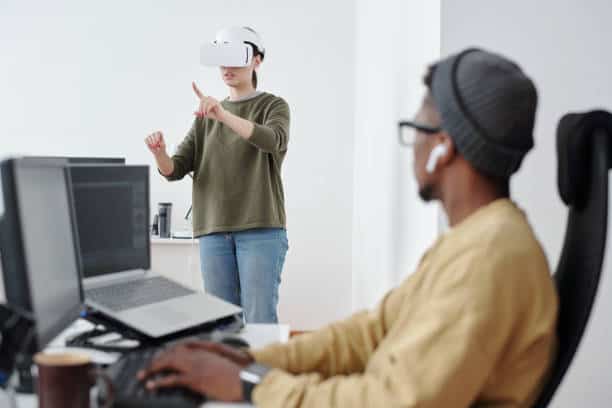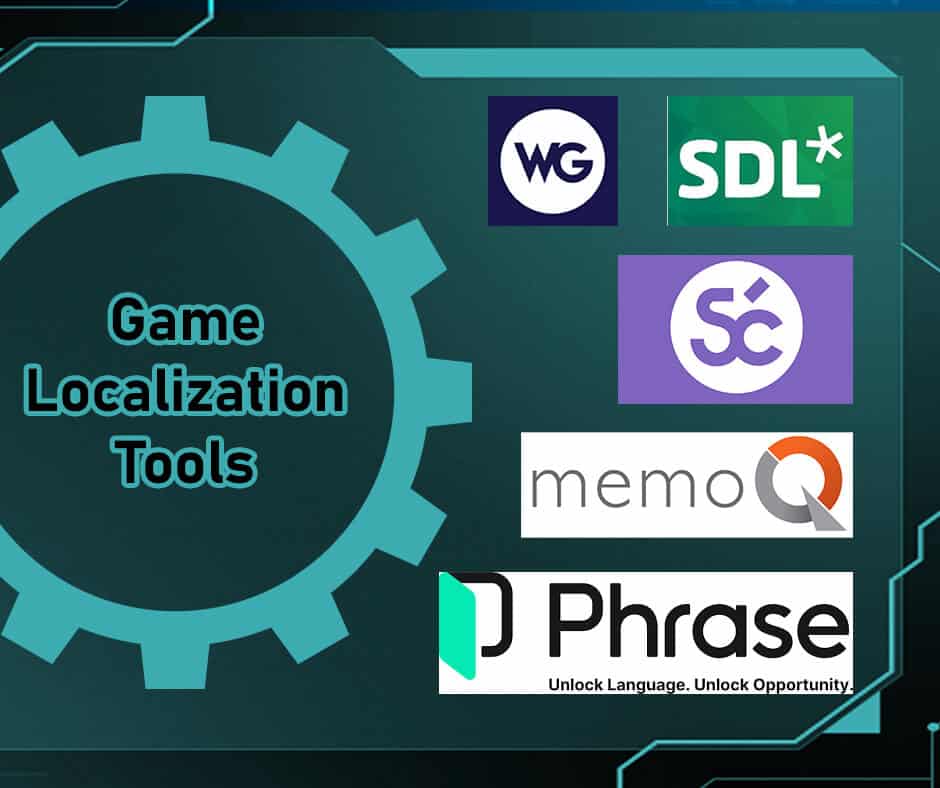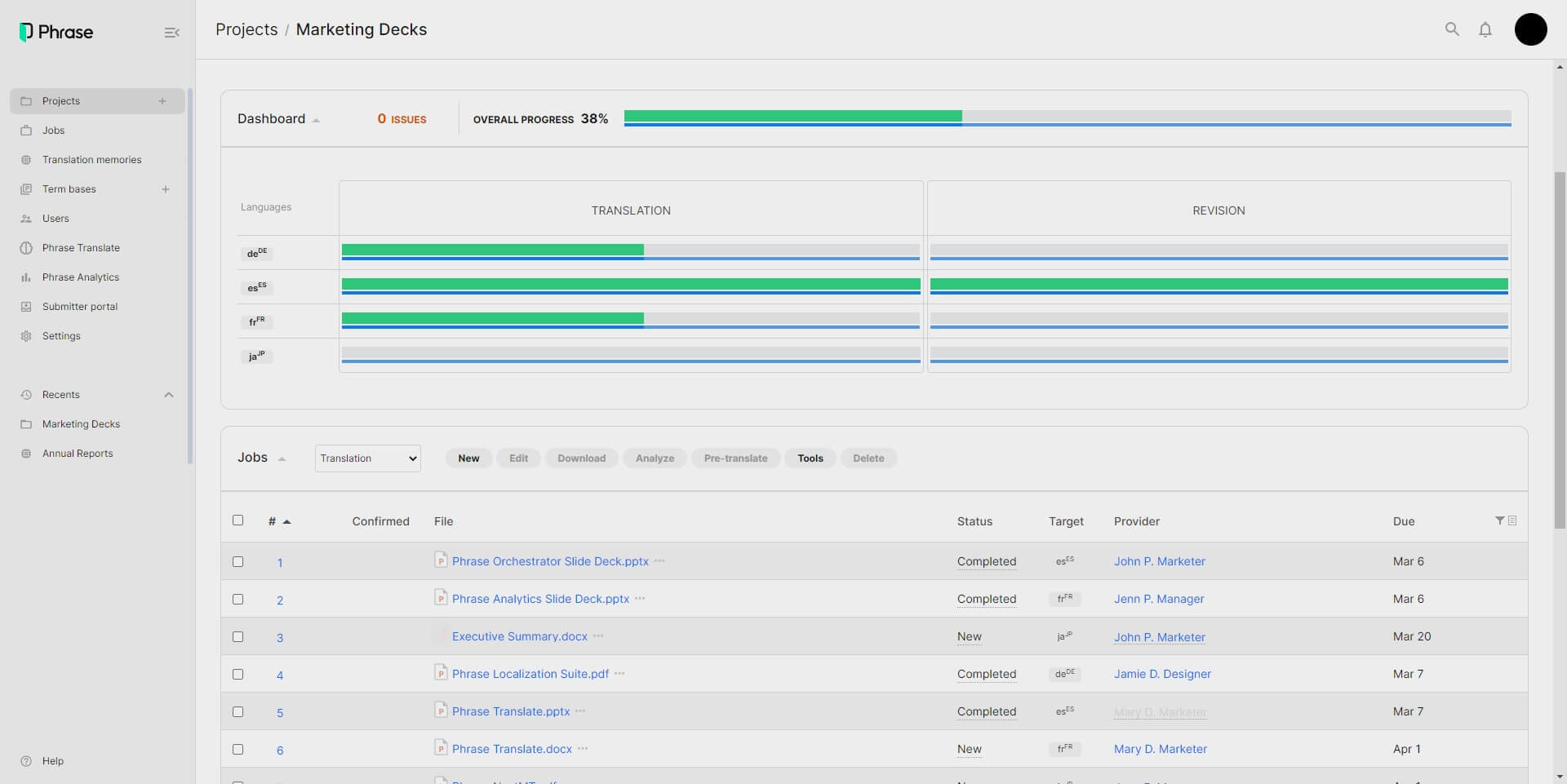Selecting the target language for your game localization project can depend on a variety of things, chief among those is where you’d like to expand to next, and which countries are known for having a large number of gamers.
If your game is in any language other than English, then the first step is to translate it into English, the universal language. Then you should consider other languages.
Choosing these other languages will depend on your intention and where you want to grow. For example, if your game is already in Chinese, you should consider localizing it to Japanese, Korean, and English.
Generally speaking, the top languages to consider for localizing games are Chinese, Japanese, Korean, English, German, French, Italian, and Spanish.
If you’re seriously considering localizing your mobile or video game, then you’ll find the following list of game localization tools quite helpful.
When do you need localization?
The first step in any language-related project is deciding what type of translation you need, or specifically, if your project requires translation, localization, or transcreation.
For this article, video game localization will entail transcreation.
To decide which of those three best suits your project, you need to distinguish between them.
Translation is the process of rendering a text from one language to another. There isn’t much creativity or freedom involved. You’ll often find technical and legal texts require translation rather than anything else.
Localization is the process of giving your translation a local and cultural flavor. Think of this as a more advanced level of translation, where local and cultural aspects, along with dialects, are taken into account.
Transcreation is a combination of translation and content creation. It’s often associated with translating marketing materials, which requires a high degree of freedom and creativity.
There are differences between translation and transcreation, chief among them is the flexibility of transcreation. That said, transcreation is often seen as much harder than translation, and accordingly far more expensive.
When it comes to video games or mobile games, localization is the best option. Why? Because it helps the game developer reach the target audience on their level, and their understanding, and connects them with the game instantly.
And while bilingualism is becoming prominent, many people prefer to read or, in this case, play in their mother tongue.
Pro Note
The first step in any language-related project is deciding what type of translation you need, or specifically, if your project requires translation, localization, or transcreation.
What is video game localization?

Video game localization, including mobile game localization, is the process of adapting a game to the target audience’s language while bearing in mind dialects and cultural aspects.
When a game company wants to expand its footprint, the logical step is to target players from a different country or region who speak a different language.
While English remains a universal language, localizing a game to the target audience’s language enables the game company or developer to expand at a much faster pace.
Video game localization isn’t simply about translating text or controls; the larger part, especially with games like FIFA, PES, and others, where characters talk and there’s a story mode, is localizing in-game dialogue, including colloquialisms, how-to-play sections, pop-ups, and more.
Moreover, depending on who you’re working with and the game itself, you may need voice-over services.
Pro Note
While English remains a universal language, localizing a game to the target audience’s language enables the game company or developer to expand at a much faster pace.
Video game localization process and best practices
So, how can you get started localizing your mobile or video game?
The simplest way to do so is to follow the following game localization best practices and processes:
1. Prepare your source code
This is a time-saving step, and while it doesn’t involve translation per se, it does save time in the overall video game localization process.
Games are, in essence, code, so ask your game developers to ensure that it’s easy to access all code strings when it’s time to export the game’s content into other formats for translators to use and handle easily.
Skipping this step may result in untranslated strings of code and, accordingly, content such as sentences and phrases when you import the localized content back into the game.
2. Consider cultural elements
An essential part of localizing a video game is taking cultural elements into consideration. Cultural elements can include dialects, colloquialisms, slang words, traditions, religion, and belief systems.
Taking culture into consideration comes at two levels: Marketing and translation. While this article mainly focuses on translation and localization, it’s important to mention the marketing side as well.
Overlooking culture, especially when moving between widely different cultures, can hurt the reception of the video game and your overall marketing and sales strategies.
Your localization team should examine the text and review the cultural differences between the source language and culture and the target language and culture.
Moreover, part of the localization process is notifying the game developer of imagery or visuals that might not be suitable for the target audience.
For example, if you’re localizing your game to German, you should avoid showing scenes of blood and gore, whereas if your target market is China, the game developer should avoid scenes with skeletons and religious symbols.
3. Provide context for your translators
The context in the world of game translation and localization means making sure that translators are aware of how the game works.
Having a simple video along with background information about the game, its timeline, and the stories involved can go a long way in making sure translators visualize what they are working on and accordingly provide accurate renderings.
If the game developer does not include this in the initial translation brief they provide you with, be sure to ask about the stories included in the game, what players are supposed to do, how they win, when they lose, and so on.
4. Ensure consistency
Localizing a game is a large project that is unlikely to be done by one person. Accordingly, you should have a glossary and notes shared between translators or team members so everyone is aware of the same requirements and targets.
This glossary or style guide should also be shared with your reviewers or quality assurance team.
Failing to keep your translators and reviewers in the loop about progress, changes, or updates, and the style guide translators adhere to, is one of the biggest game localization problems you can make. And it’s a mistake that hurt the entire localization process.
5. Use a game localization tool
Using game localization tools can help you speed up the overall game localization process and, if done right, reduce the number of mistakes and errors.
6. Review and quality assurance
Once the localization of the game is completed, it’s time for your reviewers or quality assurance specialists to review the results. At this point, we’re looking at language reviewers.
Your reviewers should have received and been made aware of any documentation shared by the client or created by the project manager, including glossaries, game-related cultural notes, stylistics, and character or player spelling.
If your reviewers aren’t on the same page as your translators, your localization process will take forever.
7. Ongoing collaboration
Localizing a game is a long process and an ongoing task. Game developers regularly update their games. Some even issue minor upgrades, such as minor mini-games or new characters, every few months.
It’s therefore important that you remain in a good relationship with the developer and maintain notes and versions of your localization efforts. This will help you speed up the localization of new games and content strings, and additions.
Pro Note
An essential part of localizing a video game is taking cultural elements into consideration. Cultural elements can include dialects, colloquialisms, slang words, traditions, religion, and belief systems.
Important game localization tools

Now it’s time to see what the top game localization tools are and how they can help you with your localization process.
You’ll find several computer-assisted translation (CAT) tools on this list. CAT tools help translators and agencies ensure consistency and speed up the translation and localization process.
1. SDL Trados
SDL Trados is probably the most popular and most widely used CAT tool in the world. Since its launch nearly 30 years ago, the company has upgraded its translation software several times to meet customer needs and to support the growing translation and localization market.
It’s worth noting that SDL Trados is used by individual translators and businesses alike.
Like other CAT tools, SDL Trados becomes more efficient the more it’s used. The software remembers the translations and input you’ve added from previous projects and carries it to your future projects.
Naturally, with any and all of the tools mentioned here, it’s imperative that there is a person overseeing and performing the work itself.
Machine translation may be making strides, but it’s a long way away from translating large documents, let alone full games with cultural and colloquial aspects.
2. memoQ
MemoQ is not a localization tool, but it does provide translation management software to help translators and translation companies better manage their localization processes.
When it comes to game localization, memoQ helps translation agencies with features such as workflow management, project tracking, reports, and customization.
3. Phrase
Another AI-based software that can act as a game localization tool is Phrase. The company explains how translators and businesses can use its software, saying, “Before a translation is assigned to a human translator, Phrase identifies content that can be translated automatically.”

In-game localization, there will be parts that are repetitive and that may – or may not – use automated translation to speed up the localization process.
However, as is the case with many localization tools, it’s best to have a translator –a human translator – review the parts or sections that were translated automatically with Phrases.
Automatic translation does offer companies a way to cut costs, but it should be used with caution.
4. Smartcat
Another CAT tool and one often used with game localization is Smartcat.
Smartcat describes itself as a tool that helps translators “improve something or fix that confidential bit of your development.”
Smartcat goes on to explain that it “includes everything you might need for an even more personalized approach to localization.”
5. Weglot
Weglot is a translation and localization plugin that can be added to a web browser. It’s widely used by e-commerce businesses, especially since it’s one of the best Shopify translation apps.
Weglot provides machine translation in minutes and offers you a translation editing tool so that your human translators can go in, edit, and localize accordingly.
Pro Note
SDL Trados is probably the most popular and most widely used CAT tool in the world. Since its launch nearly 30 years ago, the company has upgraded its translation software several times to meet customer needs and to support the growing translation and localization market.
Game localization: What else do you need to know
The process of designing and launching a game is long and costly. Some developers may opt to use game localization tools to reduce the time taken to translate and localize their games.
It may also reduce the cost of hiring a large number of in-house or freelance translators and proofreaders. However, the reviewing process will take time because game localization projects are large and require several people to review the content from the start of the project till it ends.
If you’re a game developer who is looking to break into new markets, you should know that game localization is not straightforward. It involves hard work, long hours, many considerations, and having to ensure that everything is in place.
You may even need to redesign certain elements, as was done with World of Warcraft when it was being adapted to the Chinese market. Blizzard, the developer of World of Warcraft, collaborated with a local Chinese publisher who removed images and references to skeletons and skulls (considered bad luck in Chinese culture). (Smartling)
Conclusion
Translating mobile and video games is neither an easy nor a fast process. But it’s a rewarding one.
Once you’ve settled on your needs and the language(s) you want for your game localization, it’s time to consider whether you’ll be working with freelancers (several of them) or with a game localization agency like TranslationPartner.
Working with a localization agency comes with the perks of a much smaller headache, having your project manager, and not having to deal with dozens of freelancers.
You can also have the agency localize your game into multiple languages at the same time!

